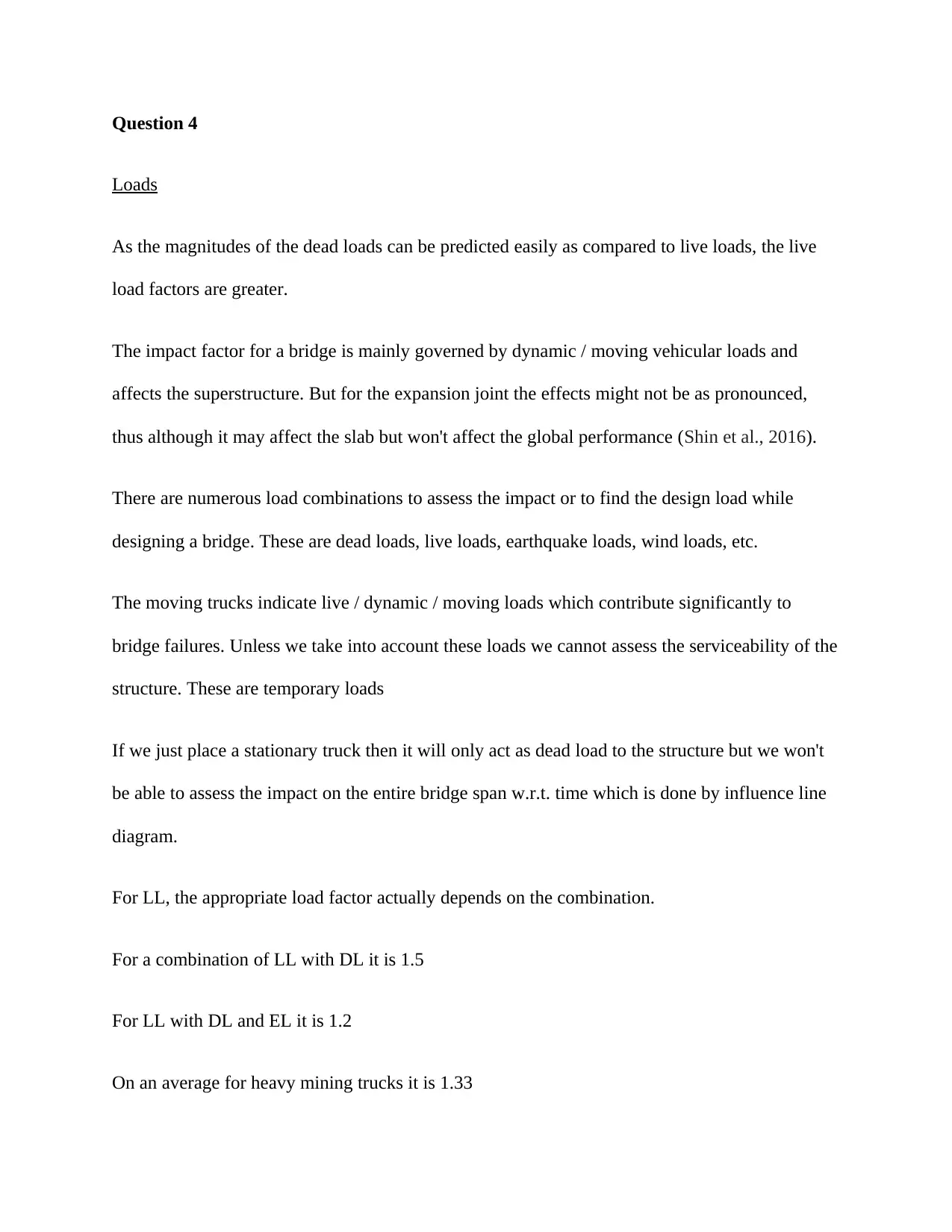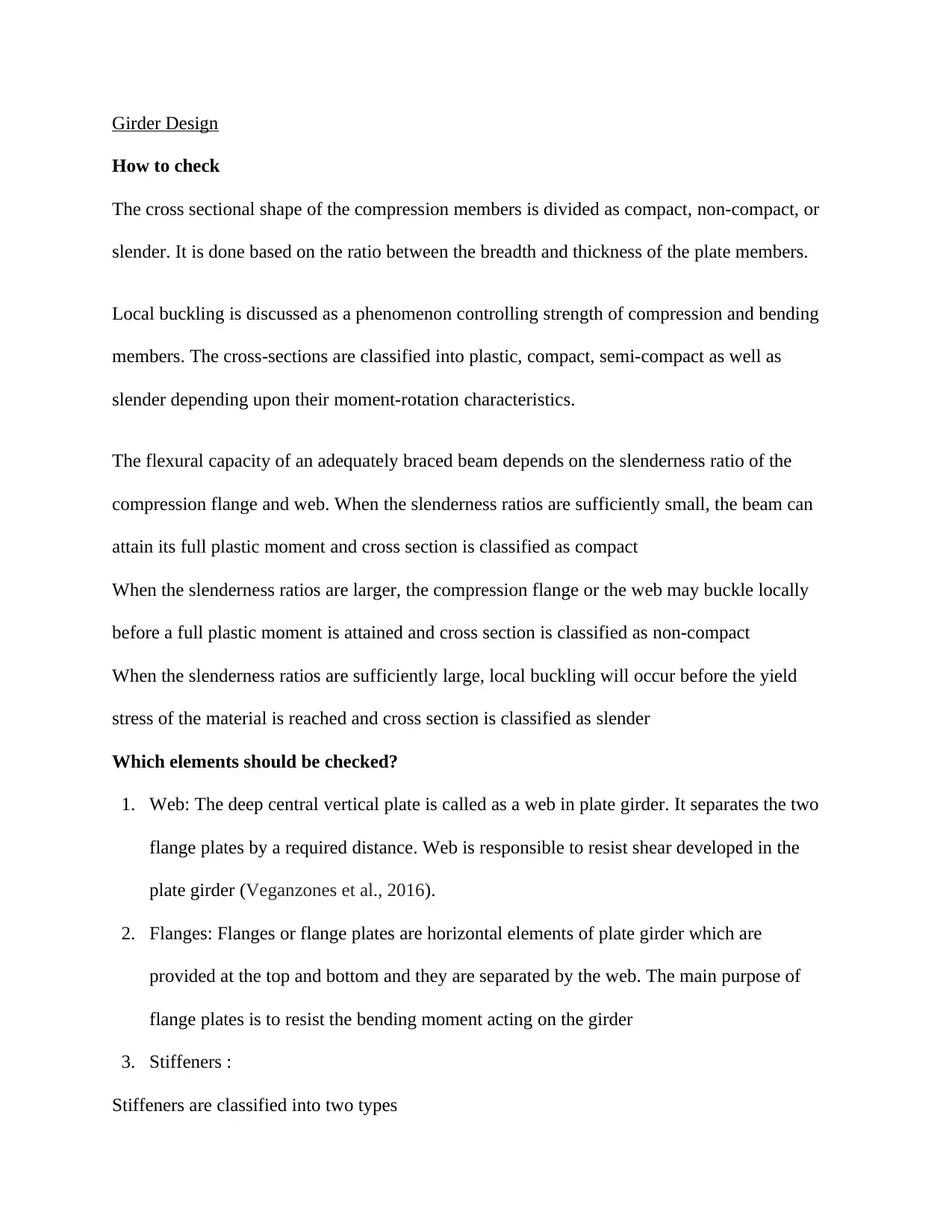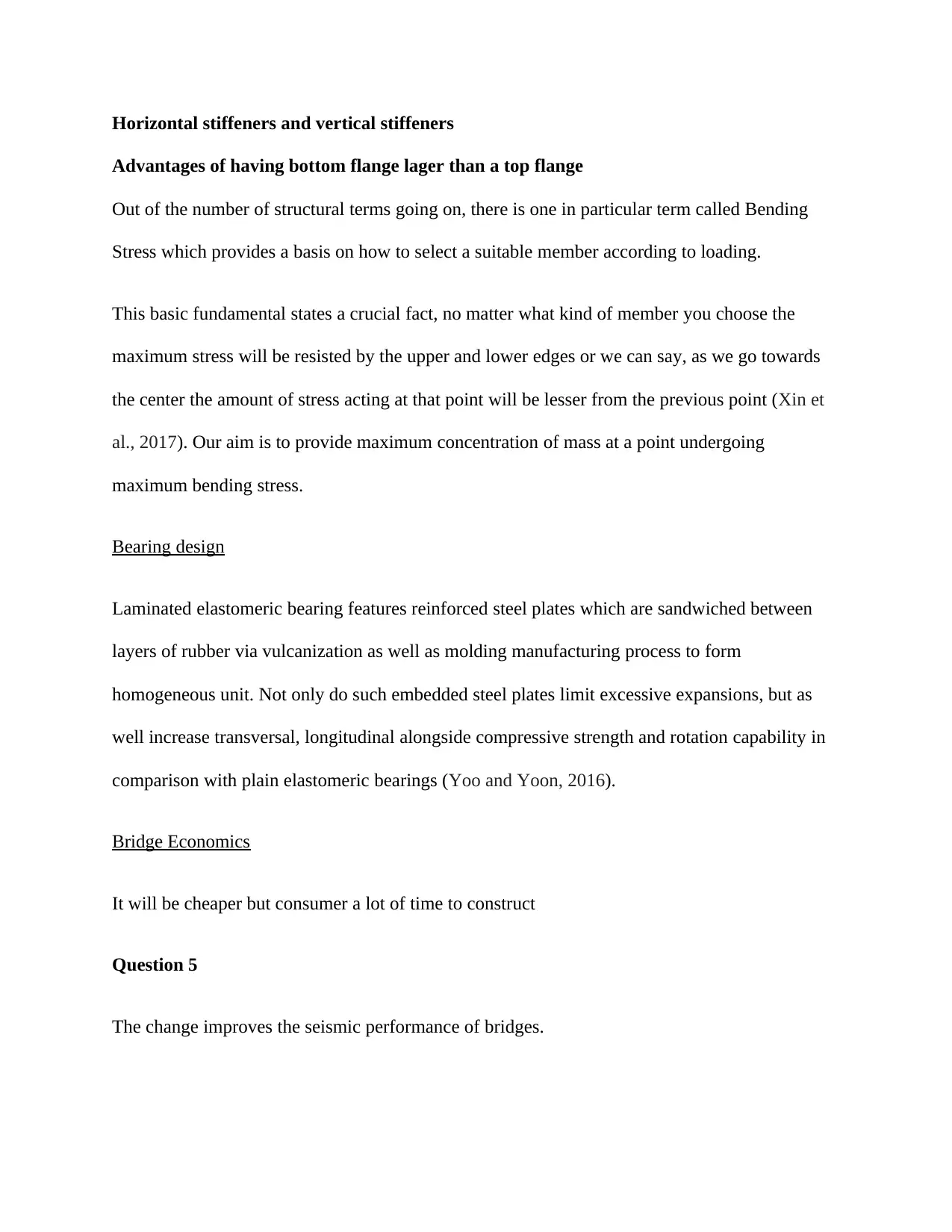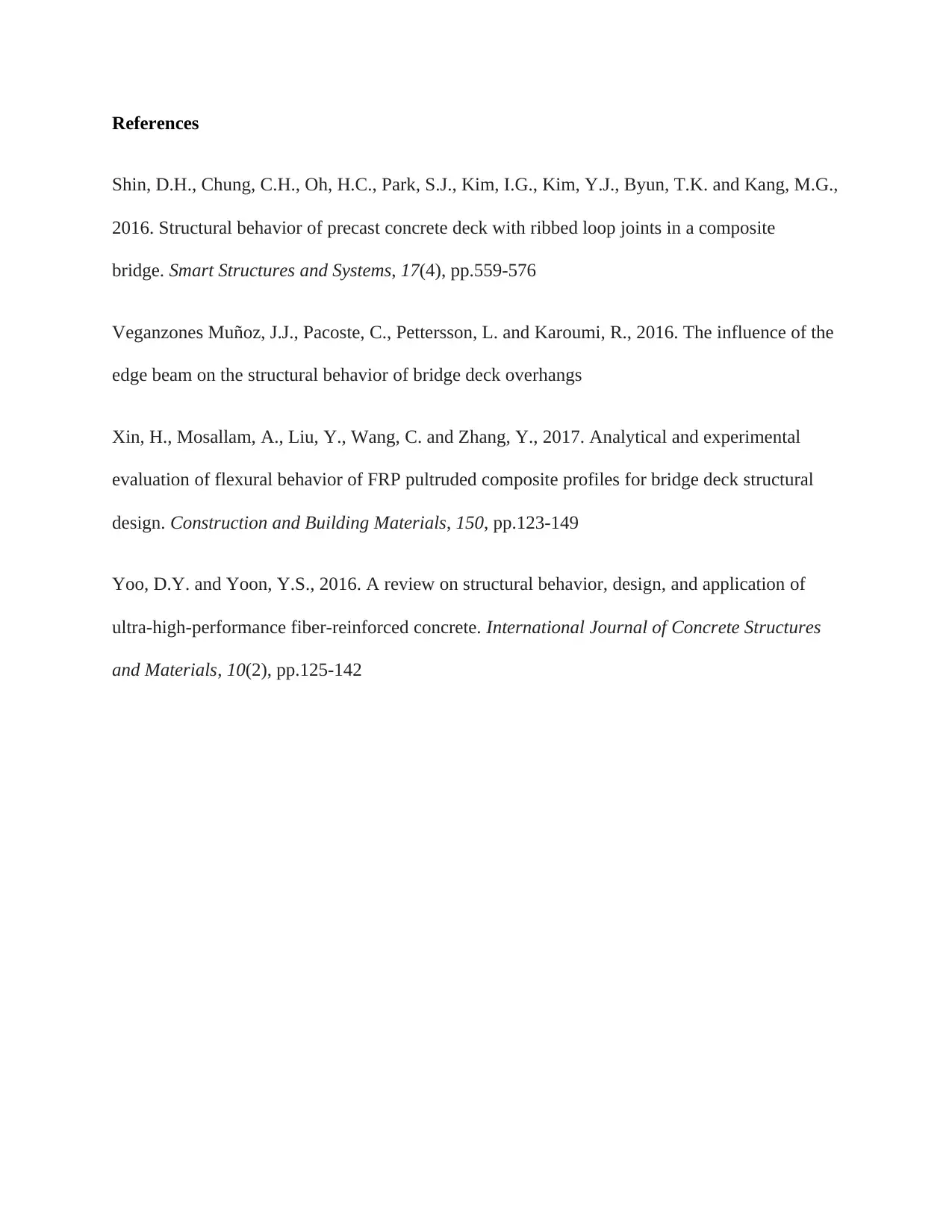Bridge Design Report: Load Considerations, Girder and Bearing Analysis
VerifiedAdded on 2022/12/15
|5
|939
|493
Report
AI Summary
This report provides a detailed analysis of bridge design, focusing on several key aspects. It begins with a discussion of load considerations, differentiating between dead and live loads, and explaining the importance of load factors, especially concerning dynamic loads from moving vehicles. The report then moves on to girder design, outlining how to classify cross-sectional shapes and the elements that need to be checked, including webs, flanges, and stiffeners. It also discusses the advantages of having a larger bottom flange. The report further delves into bearing design, explaining the features of laminated elastomeric bearings and their benefits. Finally, it touches upon bridge economics and the impact of design changes on seismic performance, providing a comprehensive overview of structural engineering principles and practices. The report references several research papers to support its findings.
1 out of 5






![[object Object]](/_next/static/media/star-bottom.7253800d.svg)